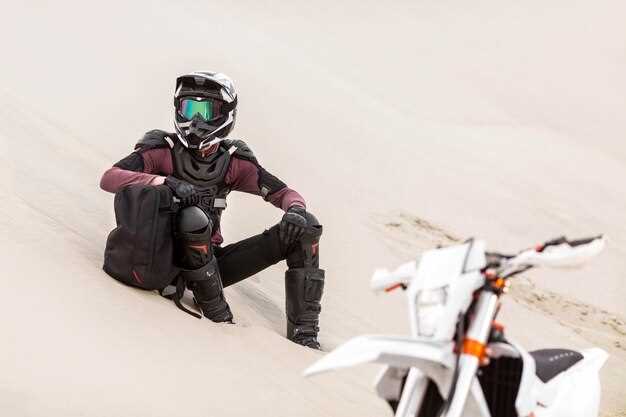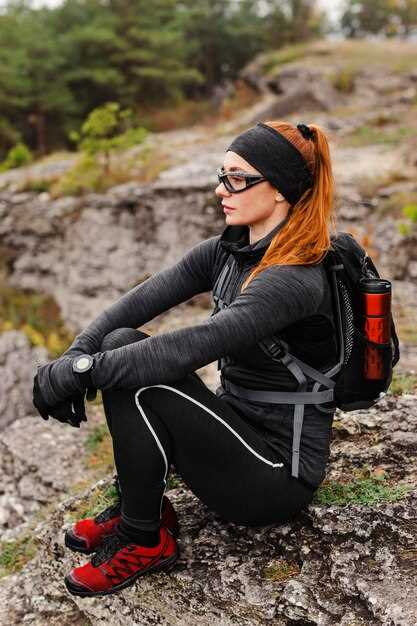
When it comes to trail riding, ensuring safety is paramount. Riders navigate through challenging terrains that can lead to unexpected falls and accidents, making the right protective gear an essential component of any adventure. With advancements in technology and materials, today’s crash protection gear offers superior comfort and safety features tailored for trail enthusiasts.
In this article, we will explore the top gear options specifically designed to minimize injury risks during trail rides. From helmets to body armor, each piece of equipment plays a pivotal role in safeguarding riders against potential accidents. The right gear not only enhances the overall riding experience but also boosts confidence, allowing riders to tackle tougher trails with peace of mind.
Understanding the importance of each protective item is crucial. Helmets provide vital head protection, while knee and elbow pads guard against joint injuries. Additionally, protective vests designed for impact absorption can significantly reduce the risk of torso injuries. With a wide range of options available, it’s essential to choose gear that fits well and meets safety standards to ensure maximum protection on the trails.
Choosing the Right Helmet for Trail Riding

Selecting the right helmet is crucial for ensuring safety while trail riding. The helmet should meet safety standards such as DOT, Snell, or ECE, indicating that it has passed rigorous testing. Look for a helmet that fits snugly without being uncomfortable. It should sit level on your head, with the front edge just above your eyebrows and the back touching the base of your skull.
Consider the type of trail riding you will be doing. For more rugged terrain, a full-face helmet may provide better protection, while an open-face helmet might suffice for leisurely rides on less challenging trails. Ventilation is another important factor. A well-ventilated helmet will keep you cool and comfortable during long rides.
Weight is also a consideration. A lighter helmet reduces strain on your neck during extended periods of wear. Additionally, pay attention to the interior padding; removable and washable padding can enhance hygiene and comfort.
Lastly, do not overlook the importance of visibility. A helmet with reflective elements can improve your visibility in low light conditions, enhancing safety on trails that may have variable exposure to sunlight. Choose a color that stands out, making it easier for others to spot you.
Understanding the Importance of Body Armor and Pads

Body armor and pads play a crucial role in ensuring the safety of trail riders by providing essential protection against impact and abrasion. The nature of trail riding often involves exposure to unpredictable terrain, which increases the risk of falls and collisions. Properly designed body armor absorbs shock and minimizes the risk of fractures or serious injuries in the event of an accident.
Supportive pads, such as knee and elbow protectors, enhance rider confidence by allowing for greater freedom of movement while maintaining safety. These pads are usually made from flexible materials that easily conform to the body, allowing riders to maneuver freely without feeling restricted. The right fit ensures maximum effectiveness, so it’s important to select gear that is specifically tailored to individual body shapes and sizes.
Many body armor options also incorporate ventilation systems, which help regulate body temperature during long rides. This feature can significantly enhance comfort, as overheating can lead to fatigue and decreased focus, increasing the likelihood of mishaps on the trail. Moreover, some armor models offer moisture-wicking technology that keeps the skin dry, further improving rider comfort over prolonged periods.
Investing in high-quality body armor and pads is essential for both amateur and experienced riders. These protective gears are designed not only for impact resistance but also for overall durability. In rigorous conditions, cheap or ill-fitting gear can fail, rendering it ineffective when it is needed most. Therefore, selecting reliable brands and products that meet safety standards is vital for ensuring optimal protection.
In summary, understanding and utilizing body armor and pads is key to enhancing safety during trail riding. By prioritizing this protective gear, riders can significantly reduce the risk of injury, allowing them to enjoy the adventure with greater peace of mind.
Selecting Appropriate Footwear for Maximum Protection
When it comes to trail riding, your choice of footwear plays a crucial role in ensuring maximum safety and comfort. Proper footwear not only protects your feet from potential injuries but also enhances your overall riding experience. Here are several key factors to consider when selecting the most suitable footwear for trail riding:
- Material:
Opt for durable materials that offer abrasion resistance and waterproof capabilities. Leather, synthetic fabrics, and rubber are excellent choices as they provide both longevity and protection against the elements.
- Fit:
Choose a snug fit without being overly tight. Proper fit minimizes the risk of blisters and enhances control while riding. Ensure your footwear allows for adequate toe movement and does not pinch or restrict circulation.
- Support:
Look for boots that provide ample ankle support to prevent sprains and other injuries. This is especially important when navigating rocky or uneven terrain.
- Grip:
The outsole should have a reliable tread pattern that provides excellent traction on different surfaces. A good grip is essential when mounting, dismounting, and navigating slippery or steep trails.
- Protection features:
Select footwear with reinforced toe caps and heel counters to guard against impacts. Some boots also offer additional padding around the ankles for extra protection.
- Breathability:
Consider footwear with breathable materials or ventilation systems to keep your feet cool and comfortable during long rides, reducing the risk of blisters.
- Water Resistance:
Waterproof boots are essential for riding in wet conditions, as they keep your feet dry and prevent discomfort that can lead to loss of control while riding.
By taking these factors into account, you can select footwear that not only maximizes protection but also enhances your trail riding experience. Remember, your safety and comfort depend significantly on the quality and suitability of your riding boots.